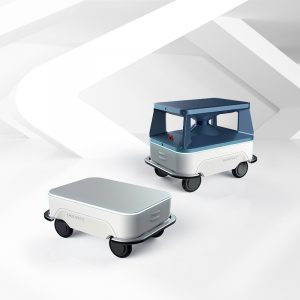With the rapid advancement of technology, various industries have witnessed significant transformations. The food service industry is no exception to this trend. In recent years, there has been a growing interest in utilizing robots for food service operations. Can these food service robots truly revolutionize the way we experience dining? Let’s explore further.
The Rise of Food Service Robots

Food service robots are autonomous machines designed to perform tasks related to food preparation, delivery, and customer service. These innovative solutions aim to streamline operations, enhance efficiency, and provide a unique dining experience for customers.
One notable example is the use of robotic arms in commercial kitchens. These advanced machines can precisely measure ingredients and execute complex cooking techniques with utmost precision and consistency.
In addition to kitchen automation, some restaurants have introduced robot servers that navigate through crowded spaces while delivering orders accurately and promptly. These humanoid or wheeled robots not only reduce human error but also add an element of novelty to the overall dining experience.
The Role of Chassis Robotics
A crucial component in food service robotics is chassis robotics – the mechanical framework on which these robots operate. chassis robotics enable smooth movement and navigation within restaurant premises by incorporating sensors, cameras, and intelligent algorithms.
These technologies allow food service robots to detect obstacles or changes in their environment effectively. By adapting their paths accordingly, they ensure seamless interaction with both staff members and customers without causing disruptions or safety concerns.
Oneway: Pioneering Innovation
Oneway is one company at the forefront of developing cutting-edge solutions for the food industry using robotics technology. Their flagship product combines artificial intelligence (AI) with machine learning algorithms to create an intelligent ordering system that enhances customer satisfaction and operational efficiency.
By analyzing customer preferences, Oneway’s system can make personalized recommendations, reducing decision-making time for customers. Moreover, it optimizes order routing to minimize delivery times and improve overall service quality.
Oneway’s innovative approach not only benefits restaurants but also provides valuable insights into consumer behavior and market trends through data analysis. This information enables businesses to make informed decisions regarding menu offerings, pricing strategies, and resource allocation.
The Future of Food Service Robots
Food service robots have the potential to revolutionize the food industry by offering efficient operations, improved customer experiences, and valuable data analytics. However, challenges such as high initial costs and concerns about job displacement need to be addressed for widespread adoption.
As technology continues to advance rapidly, we can expect further innovations in food service robotics. From robotic chefs that create culinary masterpieces with precision to automated delivery systems that ensure timely orders – the possibilities are endless.
In conclusion, food service robots present a promising avenue for transforming the way we experience dining. With their ability to automate tasks efficiently while providing unique experiences for customers, these technological advancements have the potential to reshape the future of the food industry as we know it.